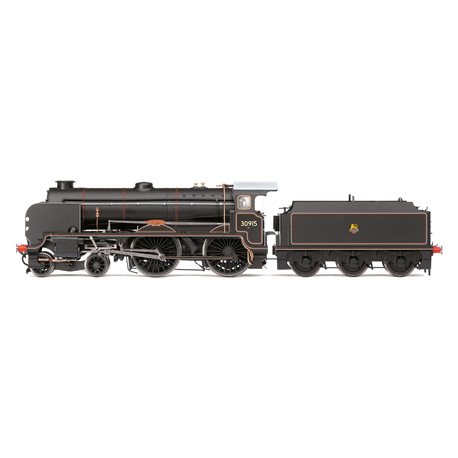No products
Product successfully added to your shopping cart
There are 0 items in your cart. There is 1 item in your cart.
Open on Good Friday
The shop will be open on Friday 18th April.
Bring us some chocolate!
BR 4-4-0 'Brighton' Schools Class - Early BR
R3208
Hornby
BR 4-4-0 'Brighton' Schools Class - Early BR
- Finish: Pristine
- DCC Type: DCC Ready
- Class: Schools
- Designer: R.E.I Maunsell
- Entered Service: 1930
- Motor: 5 Pole Skew Wound. Loco Drive
- Purpose: Express Passenger
- Wheel Configuration: 4-4-0
- Dimensions: 238mm
- Special Features: Extensive Detail
This product is out of stock
| Scale | OO (1/76) |
More info
BR 4-4-0 'Brighton' Schools Class - Early BR
- Finish: Pristine
- DCC Type: DCC Ready
- Class: Schools
- Designer: R.E.I Maunsell
- Entered Service: 1930
- Motor: 5 Pole Skew Wound. Loco Drive
- Purpose: Express Passenger
- Wheel Configuration: 4-4-0
- Dimensions: 238mm
- Special Features: Extensive Detail
The Schools Class 4-4-0 locomotives were designed by Richard Maunsell and were originally classified as Class V. A total of 40 of these powerful express passenger steam locomotives were produced at Eastleigh Works and numbered 900 - 939 for Southern Railways. Combining designs used in the Lord Nelson Class and weighing in at 110 tons, the design of this Class represented the last usage of this type of 4-4-0 wheel arrangement in Great Britain.
Introduced between 1930 and 1935, these engines were smaller than the previous Lord Nelson Class and were deemed to be the most powerful engines of their kind ever built in Britain, carrying a shortened King Arthur boiler and boasting three cylinders. In 1938, locomotive 926 'Repton' achieved the fastest speed ever recorded by a Schools Class locomotive of 95mph.
The Schools Class design was heavily influenced by restrictions on the intended Tonbridge to Hastings line. The short wheelbase was a result of the sharp curves and loading gauge of the tunnels on this line with track work on the Hastings line having had to be upgraded to accept the new locomotives. Well-liked by crew members, these locomotives were 59ft in length and could carry a coal capacity of 5 tons.
Individual locomotives were named after English Public Schools and the Schools Class became a common and recognised classification. Extension of the Class caused Southern Railway to include names of 'foreign' schools that were outside the catchment area such as 'Malvern' and 'Rugby'. Thereafter, for official naming ceremonies, Southern Railways sent the unnamed locos to a station near to the School after which they were to be named.
At production, the standard livery was Maunsell olive green. During its lifetime, the Class progressed through various liveries from that mentioned, to Bulleid malachite green, Bulleid black with yellow lettering, BR black, and finally BR green. In 1963 most of the locomotives in the Schools Class were withdrawn, of which three have been saved and are currently preserved in Heritage Railways in Britain, these include 926 'Repton', 925 'Cheltenham' and 928 'Stowe'.
Locomotive 915 was outshopped in 1933, one of the second batch of 20 built with smoke deflectors between 1932 and 1934 at the Southern Railway Eastleigh Works. It was re-numbered as 30915 when it passed to the newly nationalised British Railways in 1948. Named 'Brighton' after the school, the locomotive remained in service until it was withdrawn in 1962 and subsequently scrapped.
The livery depicted on this model shows 'Brighton' as it was in June 1953 when the locomotive was used to haul the Royal Train.




